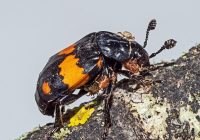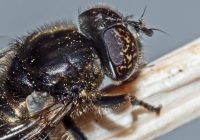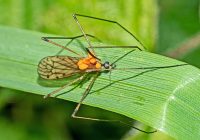Dr Phil Smith’s Wildlife Notes
May 2023
I thought we had got away without a spring drought this year but no such luck. May provided begrudging rainfall on only six days and nothing after 19th. Rachael Parks sent me rain-gauge data from her Formby garden. Her May total was 28.5 mm, this being 50% of the long-term average. Met. Office maps for May show that Greater Manchester and north Merseyside were the driest areas in England.
Occasional April showers brought forth a wonderful display of spring flowers in the first week of May, dune annuals being as prolific as I can remember. My ongoing floristic survey of the Devil’s Hole was rewarded with plenty of Rue-leaved Saxifrage, Sea Mouse-ear, Early Forget-me-not and Sand Cat’s-tail, amongst others. These soon died off, however, as the soil dried out and the water-table fell by about 13 cm during the month. Some perennials coped better with drought, including the rare and impressive hybrid between the Field Mouse-ear and the non-native Snow-in-summer on Birkdale Common. Having greatly increased since I found it in 2010, the plant now covers about 100 square metres.
Many duneland insects enjoyed the conditions before it got too dry. One of many highlights came on 2nd when my regular visit to the Devil’s Hole to measure the water-table was interrupted by a Pine Long-horned Hoverfly on the same pine trunk that it used in 2021. This was a rare Caledonian Forest speciality of the Scottish Highlands until it began to appear from 2011 onwards in English conifer plantations in. It is now increasing in the Sefton pinewoods.
Liverpool Museum’s Tanyptera Project organised a splendid field meeting for about 15 insect specialists at the Devil’s Hole on 12th May. I joined them in the afternoon, logging seven of the nationally scarce Spring Heath Robberfly, a Sefton Coast speciality. Returning from the Hole with the group in the late afternoon, I was recounting the story of the Pine Long-horn when I spotted one flying around a nearby tree. It soon vanished, so nearly everyone missed it. Disappointed, we started to walk on when a member of the group re-located the Long-horn high on the trunk of its favourite tree. It was expertly netted and potted so that everyone could have a good look before it was released. A full account of the day’s finds is awaited; an early report from Phil Brighton lists 88 flies, three of them being new to the vice-county and one seen only twice before in Britain!
The following day found me on Hightown dunes where a small woodland glade produced four Red-legged Robberflies, a brilliant Red-headed Cardinal beetle and a bright orange cranefly. Only when I checked my photos, did I realise that the orange patches were mites. Identifying the cranefly as Limonia phragmitidis, Phil Brighton explained that the mites were ‘hitchhikers’ not parasites. The same applies to the Common Sexton Beetle that I photographed with its attendant mites at the same place. On my way back from the glade, I looked in on a patch of Baltic Rush x Soft Rush planted in 1992, using material originally from Hightown cultivated by Prof. Clive Stace. This is one of the rarest British plants having been found ‘in the wild’ only three times. The hybrid has grown well at Hightown but its habitat in an old scrape is threatened by Sea Buckthorn invasion.
Returning to insects, an amazing find at Ainsdale NNR was Pete Kinsella’s Large Marsh Horsefly. One of the ‘giant horseflies’, this spectacular creature is over an inch long. Our only previous sighting was on a cow in 2018, also at Ainsdale NNR. Trevor Davenport and I visited the site a few days later. There was no sign of the horsefly but compensation was another Pine Long-horned Hoverfly and north Merseyside’s earliest record of a Southern Hawker dragonfly. Alt Bridge on Downholland Brook provided another major attraction in the form of Banded Demoiselles. On 18th, I counted 42 of these beauties. With them were several Large Red, Azure and Blue-tailed Damselfies, together with a superb Buff-tailed Bear Hoverfly, the first Great Pied Hoverfly of the season and as many as six Downlooker Snipeflies. A large weevil was later identified as Liophloeus tessulatus. Although fairly common in England and Wales, it was only the second for Sefton, the first being recorded by Pete Kinsella in 2021, also at Alt Bridge. Umbellifer flowers at Sands Lake, Ainsdale, are always worth checking for insects. Among several hoverflies, I found a Small Spotty-eyed Droneflythat wasn’t identified until I examined my photos and saw its amazing eyes.
Dragging myself away from the Sefton Coast, I visited Rufford on29th with Jack Taylor. A few Red-eyed Damselflies were seen on the canal last year and we wanted to monitor their current status at this, their only known site in Lancashire. We were overwhelmed by the numbers, counting 100 individuals, including 24 mating pairs, over a distance of 830 m.
After a desperately dry May in 2020, I wrote: “Surely June can’t be as dry as this!” Can it?






